|



|
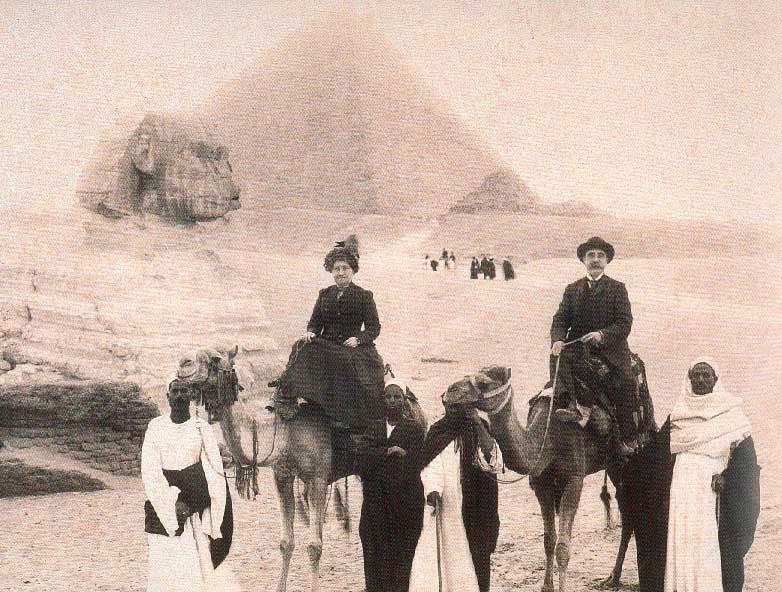
Lecture
Schedule
|
|
LECTURE SCHEDULE
Note: I will make every
effort to follow the syllabus as outlined, but reserve the right
to make scheduling changes when further discussion of a given
topic is required or to take advantage of unforeseen events
and opportunities. All
readings are in the course kit unless otherwise noted. Web resources
will be added throughout the term to reflect students’ interests.
|
|
|
Week
1 September 6
|
Introduction
A constellation of ideas: From Gesamtkunstwerk
to the digital era
Disciplinarity, interdisciplinarity and why are we all here?
Outline of the interdisciplinary context of this course of study.
|
To
do this week:
-
fill out an index card with your name, contact
information, your picture and thoughts about 'arts and
ideas' -PLAY. Have fun. Fill the entire card. Bring it
next week (cards will be handed out in class but if you
miss the class, any index card will do). Think of it as
an oulipo
- inspired art project:
"The
more constraints one imposes, the more one frees oneself
of the chains that shackle the spirit... the arbitrariness
of the constraint only serves to obtain precision of execution."
Igor Stravinsky
-
set up computer access and establish personal e-mail account
at York.
- visit Scott Library and the Sound and Moving image Library
to gather information and orientation to the services
available.
-
purchase course reader for FACS 1900 Section B
- review course outline, schedule, class projects, and
methods of approach outlined in the first class meeting.
-
follow the links below to Tick Tock Bang: Noise in
Modern Art first broadcast on CBC's IDEAS 27 January
1999
"Novelist Russell Smith (How Insensitive;
Noise) devises a sound essay examining Futurism,
minimalism, poetic collage, abstract painting, and the
most listener-unfriendly music ever recorded, the style
called Rotterdam, beloved of art students and disenchanted
punk-rockers."
 Listen
to an extended version of this program in realtime
(68:00 mins) or
download (8.5 MB .ra file) Listen
to an extended version of this program in realtime
(68:00 mins) or
download (8.5 MB .ra file)
If
you had trouble listening to the audio, you may access
a transcript of the programme here.
|
|
|
Week
2 September 13
|
Performing
interdisciplinarity: ideas, methods, examples
Robin White “Laurie Anderson” J, Siegel (ed.) Art Talk UMI Research Press, 1990
Peter
Lunenfeld “Hybrid Architecture: Hardscapes and Imagescapes”
in Snap to Grid: a user’s guide to digital arts, Media, and
cultures Boston: MIT Press, 2000
Web resource: vr
caves: virtual and immersive environments
click here for the list of examples
of interdisciplinary work students generated last class
lecture outline
|
|
Week
3 September 20
|
Avant-gardes
THE FUTURIST MODEL
"Acceleration is the one constant
in our experience of modernity. . . . Speed is not so much a
product of our culture as our culture is a product of speed,"
Whitechapel Art Gallery and the Photographers'
Gallery catalogue for the ‘Speed’ show
The
bookstore has promised the kit will be in next week, but if
for any reason the kits arenot available note that many of the
futurist readings *are* available online. You can access links
to some of the manifestos below, here:
http://www.unknown.nu/futurism/
Please select one of the following manifestoes:
Umberto Boccioni, Carlo Carrà, Luigi Russolo, Giacomo Balla, and
Gino Severini, Futurist Painting: Technical Manifesto, 1912.
Umberto Boccioni, Technical Manifesto of Futurist Sculpture, 1912.
Filippo Marinetti, Destruction of Syntax/Imagination without
Strings/Words-In-Freedom (on layout and typography), 1913.
Luigi Russolo, The Art of Noises, 1913. (web)
Antonio Sant’Elia, Manifesto of Futurist Architecture,
1914.
Filippo Marinetti, Bruno Corra, and Emilio Settimelli, Futurist
Synthetic Theatre, 1915.
Filippo Marinetti,
Bruno Corra, Emilio Settimelli, Arnaldo Ginna, Giacomo Balla,
and Remo Chiti, Futurist Cinema, 1916.
Filippo Marinetti, Manifesto of Futurist Dance, 1917.
lecture outline
|
|
September
27
|
Yom
Kippur – no classes
|
|
Week
4 October 4th
|
Dada and surrealism
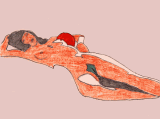
© Stephen X. Arthur, 1990
|
|
Paul
Wood “Introduction: the avant-garde and modernism” (moved from
last week -- if the kit is not available on Monday, you will
only be responsible for one of the Wood articles) Paul Wood
(ed.) The Challenge of the Avant-Garde New haven and
London: Yale UP, 1999
Paul
Wood “The revolutionary avant-gardes; dada, Constructivism and
Surrealism” in Paul Wood (ed.) The Challenge of the Avant-Garde,
New haven and London: Yale UP, 1999
Bureau of Surrealist Research “declaration of 27th January, 1925”
In Steve Edwards Art and its histories: A Reader New haven
and London: Yale UP, 1999
Web resource:
See DaDa Online and explore the International
Dada Archive
Surrealism
[...] makes things strange. It opens us up to the fundamental
strangeness of our existence. If you really pay attention, all
things are strange, all people are strangers. Dreams are strange,
and surrealism merges dream and reality. To a pure animal, every
moment of existence is strange. We need to experience this,
not so we can transcend reality, but so we can be more real.
--
Stephen X. Arthur, 1999.
Analytical
review due
|
|
Week
5 October 11th
|
Automation
and automata
“Yet
at the same time -- human-computer interaction would profoundly
affect aesthetics, leading artists to embrace collaborative
and interactive modes of experience. Not just interdisciplinary
art works, but collaborations between artists, philosophers,
scientists….”
Peter Wollin “Modern Times:
Cinema/Americanism/The Robot” In P. Wollin Raiding the icebox London.NY: Verso, 1993
Web
resource: explore Fritz Lang's Metropolis and Metropolis
lecture
notes
|
|
Week
6 October 18th
|

Film:
Metropolis
Lecture:
Kathy
1.
Everyday Life and The Situationists
|
|
Week
7 October 25th
|
Collagist
practices of knowledge

"This
new artist is an architect of the space of events, an engineer
of worlds for billions of future histories, a sculptor of the
virtual." – Pierre LÈvy
George P. Landow “Hypertext as Collage Writing in P. Lunenfeld
(ed) Digital Dialectic: new essays on new
media Boston: MIT Press, 1999
Bill Nichols “The Work of Culture
in the Age of Cybernetic Systems” in T. Druckery (ed.) Electronic
Culture: technology and Visual representation, NY: Aperture,
1996
lecture
outline
Second half of class -- Alicia
Vogel - guest artists from Argentina – ‘making art in the
barrios’
|
|
Week
8 November 1
|
Postmodernity
and design
Ellen Lupton and Abbott Miller “Deconstruction and Graphic Design”
In Design Writing Research London: Phaidon, 1996
(this
is a difficult article, but very worthwhile – terms, concepts
and theorists likely to be new to you will be explained thoroughly
in class).
|
|
Week
9 November 8
|
Systems
and conventions
Ellen Lupton and Abbott Miller “Modern Hieroglyphs” in Design
Writing Research
London:
Phaidon, 1996
Paul
Griffith “Sound-Code-Image” In Eye Music: The Graphic Art
of New Musical Notation. London: Arts Council, 1986, pp.
5-11.
|
|
Week
10 November 15
|
Form
and Function: The Bauhaus experiment in Weimar Germany.
 "All
the Arts Culminate in Architecture"- Bauhaus Manifesto "All
the Arts Culminate in Architecture"- Bauhaus Manifesto
"The
Bauhaus was never an art school in the traditional sense. 'Art
alone cannot be taught' is the credo postulated in the Bauhaus
Manifesto of 1919. Goal of the course was to form a universal
designer able to work with equal creativity in the fields of
architecture, handcrafts, or industry."
Required
reading: Walter Gropius, "My
Conception of the Bauhaus Idea"
web
resource: bauhaus archive museum of design http://www.bauhaus.de/english/

Xanti
Schawinsky, Circus, Set design, c. 1924, Tempera, Indian ink
and silberbronze
|
|
Week
11 November 22
|
High/Low
Image/text theory/fiction: Graphic novels

Maus -
a Pullitzer prize-winning comic book about the holocaust
Web resource: MAUS
at the National Museum of American Jewish History
|
|
Week
1 2 November 29 – last class of the term for
this class
|
Borders
and border-crossing – revisiting and review

Irit
Rogoff “borders” In I. Rogoff Terra Infirma:
geography’s Visual Culture NY: Routledge, 2000.
Bruce Barber “Art History’s Significant Other… Film Studies”
i n
Cheetam et/ al (eds) The Subjects of Art History: Historical Objects in Contemporary
Perspective Cambridge: Cambridge
University Press, 1998
   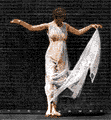
web
resource: Complete
history of the discovery of cinematography
Second half of class: review
some
webpages to help you review:
revisit the goals
of the course
good
reading strategies
review chart
|
|
Last
day of undergraduate classes is December 5th.
The
midterm exam will be held December
8th, 2001 12-2 p.m. Vari Hall A
|
|
Week
13 January 3rd
|
Postmodern
performance
Film: Corigliano and Hoffman’s The Ghosts of Versailles:
A Grand Opera Buffa in two Acts
Or: guest speaker
from York University Libraries ( we will try to reschedule ‘ghosts’
if it is not available)
|
|
Week
14 January 10
|
The
1950s "Happenings,"
Warhol and the Beats
Fortunately art is a community effort --a small but select
community living in a spiritualized world endeavoring to interpret
the wars and the solitudes of the flesh.------Allen Ginsberg
"I
would rather watch somebody buy their underwear than read a
book they wrote" -Andy Warhol
Reading:
Peter Wollin “Notes from
the Underground: Andy Warhol” In P. Wollin
Raiding the icebox London.NY: Verso, 1993 (kit)
Alan Ginsberg HOWL
(online)
Film:
The Age of Anxiety 'American art reflects the upheavals of the
last 25 years'
lecture
outline
|
|
Week
15 January
17
|
style

source:
adbusters
Dick
Hebdige “A Report on the Western Front: Postmodernism and the
‘Politics’ of Style”
In
F. Frascina and J. Harris (eds) Art in Modern Culture London:
Phaidon, 1992
Mark
Kingwell “Interior Decoration: Politics as lifestyle accessory”
(Review of LifeStyle by Bruce Mau) Harper’s Magazine,
June 2001
-
David Harvey “The urban Experience” (excerpt) In Steve Edwards Art and its histories:
A Reader New haven and London: Yale UP, 1999
Web
resources: culture jamming:
adbusters
design anarchy issue
Preliminary bibliography
for research essay due

|
Week
16
Jan 24th |
Annotated
bibliographies due. Discussion of collaborative projects. Warhol
film. |
|
Week
17 January
30
|
Interdisciplinary
spaces
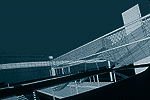
-
Louis Martin “Interdisciplinary transpositions: Bernard Tschumi’s
Architectural Theory”
In A. Coles and A. Defert (eds.) The Anxiety of Interdisciplinarity
(dis-de-ex- volume 2)London: Black Dog Publishing, 1998
-
Anthony Vidler “Interpreting the Void: Architecture and Spatial
Anxiety” In
Cheetam et/ al (eds) The
Subjects of Art History: Historical Objects in Contemporary
Perspective Cambridge: Cambridge University Press, 1998
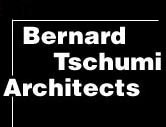 web
resource: Bernard Tschumi Architects web
resource: Bernard Tschumi Architects
|
|
Week
18 February 7th
|
Gender,
collaboration and genius
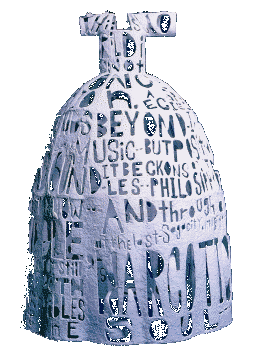 |
Lesley Dill (b. 1950) White Poem Dress, 1993 ["This World
is not Conclusion," Poem No. 501] Painted metal and plaster
55 x 36 x 30 in. Private Collection
|
"Let us now extend everything we do to be part of a grand
collaboration - with one's self, one's tools, other humans..."
– Alan Kay
- Linda Nochlin
“Why have there been no great Women Artists” (excerpt)
In Steve Edwards Art and its histories: A Reader New haven
and London: Yale UP, 1999
- Johanna Frueh “There is a Myth” In Erotic Faculties, University of California Press, 1996
- Jack Stillinger
“Plays and Films: Authors, Auteurs, Autres”
supplementary: Christine Battersby “The Clouded Mirror: from gender and genius:
towards a feminist aesthetic” (excerpt)
film:
Reclaiming the Body
lecture
outline
|
|
Last
day to drop F/W courses is February 8th. Reading
week is February 11-15th.
|
|
Week
19
february 21
|
1.
Play Space

Beatriz Colomina “Reflection on the Eames House” In A. Coles and A. Defert (eds.) The Anxiety of Interdisciplinarity
(dis-de-ex- volume 2)
London: Black Dog Publishing, 1998
lecture notes
2. the Gaze:
Film: THE LIFE AND TIMES OF SARA BAARTMAN: THE HOTTENTOT
VENUS “A Khoi Khoi woman was taken from South
Africa in 1810 and exhibited across Britain. A court battle
waged by abolitionists to free her from her exhibitors failed.
In 1814, a year before her death, she was taken to France and
became the object of scientific research that formed the bedrock
of European ideas about black female sexuality.”
|
|
Week
20 February 28th
|
gaze
and display
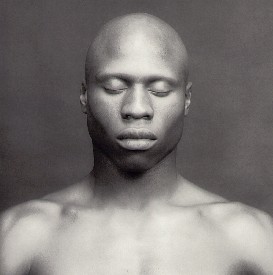
Robert
Mapplethorpe Ken Moody 1983 © The Estate of Robert Mapplethorpe
lecture
outline
Thelma Golden “My Brother” in T. Golden (ed.) Black Male : Representations
of Masculinity in Contemporary American Art NY: Whitney
Museum, 1994.
Stuart
Hall “What is this ‘Black’ in Black Popular Culture?” in M.
Wallace, G. Dent (eds.) Black Popular Culture NY: Dia
centre for the Arts, 1992
Film:
Cannibal
Tours “Dennis
O'Rourke Depicts the interaction between tourists on a luxury
cruise in the South Pacific and the aboriginal people of Papua
New Guinea. Examines western culture's fascination with the
exotic.”
suggested:
Peter Wollin “Into the
Future: Tourism, Language and Art” In P. Wollin Raiding the icebox London.NY: Verso, 1993
Irit Rogoff “Luggage” in
I. Rogoff Terra Infirma: geography’s Visual Culture
NY:
Routledge, 2000.
Jo-Anne Birnie Danzker “Am I authentic?” [excerpt from Dreamings: Aboriginal Art of
the Western Desert] in Steve Edwards Art and its histories:
A Reader New
haven and London: Yale UP, 1999
Interdisciplinary
research paper/critical work paper/project due
|
|
Week
21 March 7
|
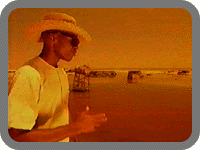
Rasheed Araeen “The artist as post-colonial subject and this individual’s
journey towards ‘the center’” In C. King (ed.) Views of Difference:
Different Views of Art New
haven and London: Open University and Yale UP, 1999
Teshome H. Gabriel “Thoughts on Nomadic Aesthetics and the Black
Independent Cinema: traces of a Journey” in Ferguson et. Al.
(eds.) Out there; marginalization and Contemporary Cultures
Cambridge: MIT Press, 1990
Film: last angel of history film: Last Angel on History. 'Explores
the relationships between Pan-African culture, science fiction,
intergalactic travel, and computer technology, in black music,
in the writings of black science fiction writers, and in the
works of black cultural critics.'
Web resource: Archives of African American Music and Culture
Mission
|
|
Week
22 March 14
|
Through
the machine
Jean-Louis
Comolli “Machines of the Visible” in T. Druckery (ed.) Electronic
Culture: technology and Visual representation NY: Aperture,
1996
Mark Derry “Ritual mechanics: Cybernetic Body Art” in Bell D, Kennedy
B M (Eds) The Cybercultures Reader London: Routledge,
2000
You
will have time in lecture/tutorial today to work on your collaborative
projects.
|
|
Week
23 March 21
|
Haunting
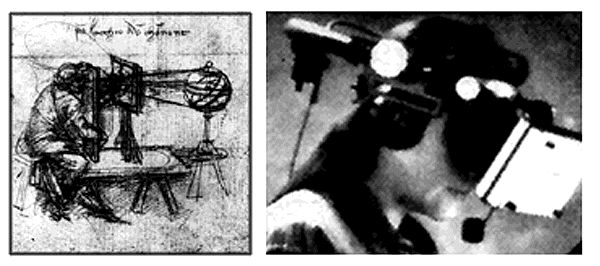
- Jay David Bolter “Immediacy, Hypermediacy, and remediation” in Remediation:
Understanding New Media Cambridge: MIT Press 2000
- Mieke Bal Quoting Caravaggio (excerpt) Chicago: University of Chicago Press,
1999
--
R. Murray Schafer “Theatre of Confluence’
|
|
Week
24 March 28
|
Collaborative
group project due – the day will be set aside for you to display and
share your work. Please
be available for the entire class time. Location: TBA
|
|
Week
25 April 4
|
Review
class
|
|
The
final exam will be scheduled during the formal examination period
– date, time and location TBA.
Last day of undergraduate classes is April 5th.
|
+ Parts of this syllabus are indebted to or from the work
of James Gillespie, Leslie Korrick, Renate Wickens , York University and
Heather Zwicker, University of Alberta.
|